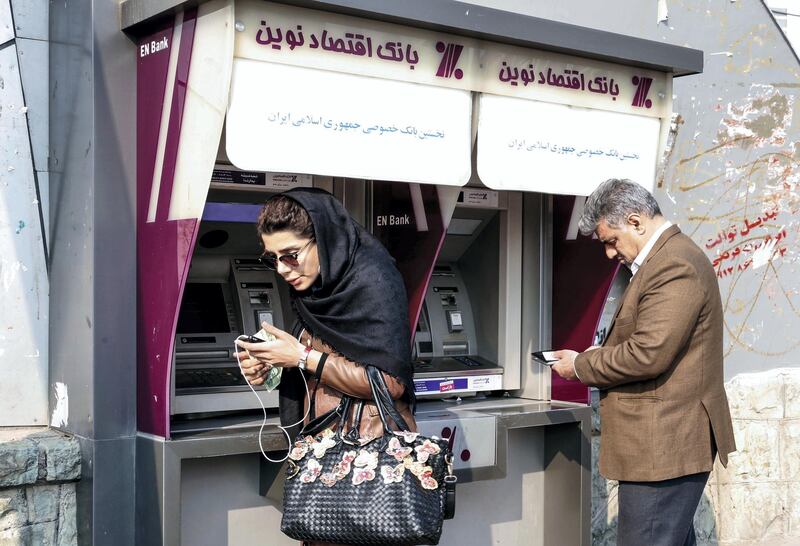There is little hope of progress regarding Iran's ability to recapitalise and restructure its battered banking sector as bad loans continue to mount in the wake of tightening US sanctions that take their toll on the economy.
“Many Iranian banks are in need of recapitalisation and restructuring, having accumulated high levels of non-performing loans,” Fitch Solutions, a unit of Fitch Group said on Tuesday in its latest report on the country's banking sector. “We see little scope for meaningful progress.”
Although an outright collapse of the Iran’s financial sector is unlikely in the near term, consolidation is eventually needed in the sector, according to the survey. The weakness in the sector is largely the result of years of interference with lending practices by government and government-linked entities, coupled with a weak regulatory environment, the report said. During the previous sanctions that preceded the 2015 nuclear agreement known as the Joint Comprehensive Plan of Action, Iranian banks offered interest rates as high as 30 per cent on deposits.
“We therefore expect bank lending standards to remain weak, and this – coupled with deteriorating macroeconomic conditions – will likely cause non-performing loans to increase further,” Fitch said.
Iran's economy entered into recession in 2018 as the reimposition of US sanctions spurred investment outflows, oil export reductions and stoked inflation. This slowdown is likely to deepen in 2019 as sanctions remain in place and may tighten further.
_______________
Read more:
[ Sanctions-hit Iranian banks have little scope of international business ]
[ Iran to face recession as US sanctions bite ]
Iranian inflation set to rise sharply as US sanctions deadline approaches
Iran central bank authorised to intervene in foreign exchange market to defend rial
Iranians are under no illusions about a regime that has squandered its resources to spread terror
_______________
However, even before the US sanctions in November, Iran's economy was struggling with the rial hitting multiple record lows against the US dollar, as investors feared that a reduction in oil exports will drastically affect all segments of the economy. The rial lost as much as 70 per cent of its value against the green back last year. Lenders continued to increase interest rates to attract deposits but many are now in trouble because of the weak economy.
“That said, amid the reimposition of US sanctions and restrictions on Iranian trade, the [Hassan] Rouhani administration appears to be shifting away from its initial focus on pro-market and banking sector reforms, towards the development of a ‘resistance economy’,” Fitch said. “Many hardliners are fundamentally opposed to opening up the banking sector to international scrutiny, arguing that this would limit Iran’s ability to maintain strategic depth via ties to non-state actors and increase its dependence on external actors.”
More importantly, government revenues are falling rapidly as a result of the sanctions-induced drop in Iranian oil exports, limiting funding available for recapitalisation – particularly as the maintenance of import subsidies and welfare programmes take priority.
“Banks look set to continue to fund lending activities by borrowing from the central bank, which in turn will result in persistently high money supply growth and inflation,” Fitch said.







